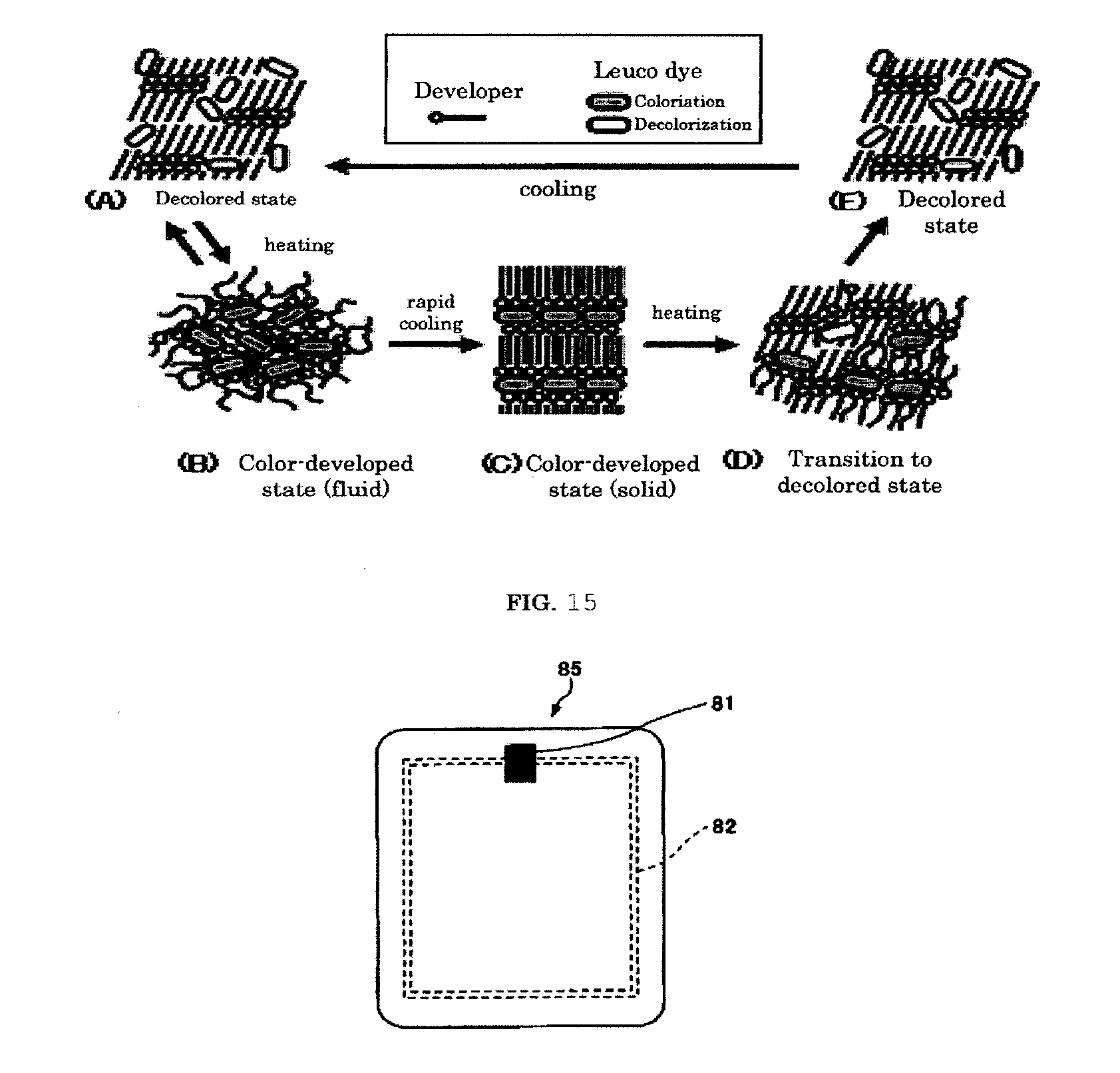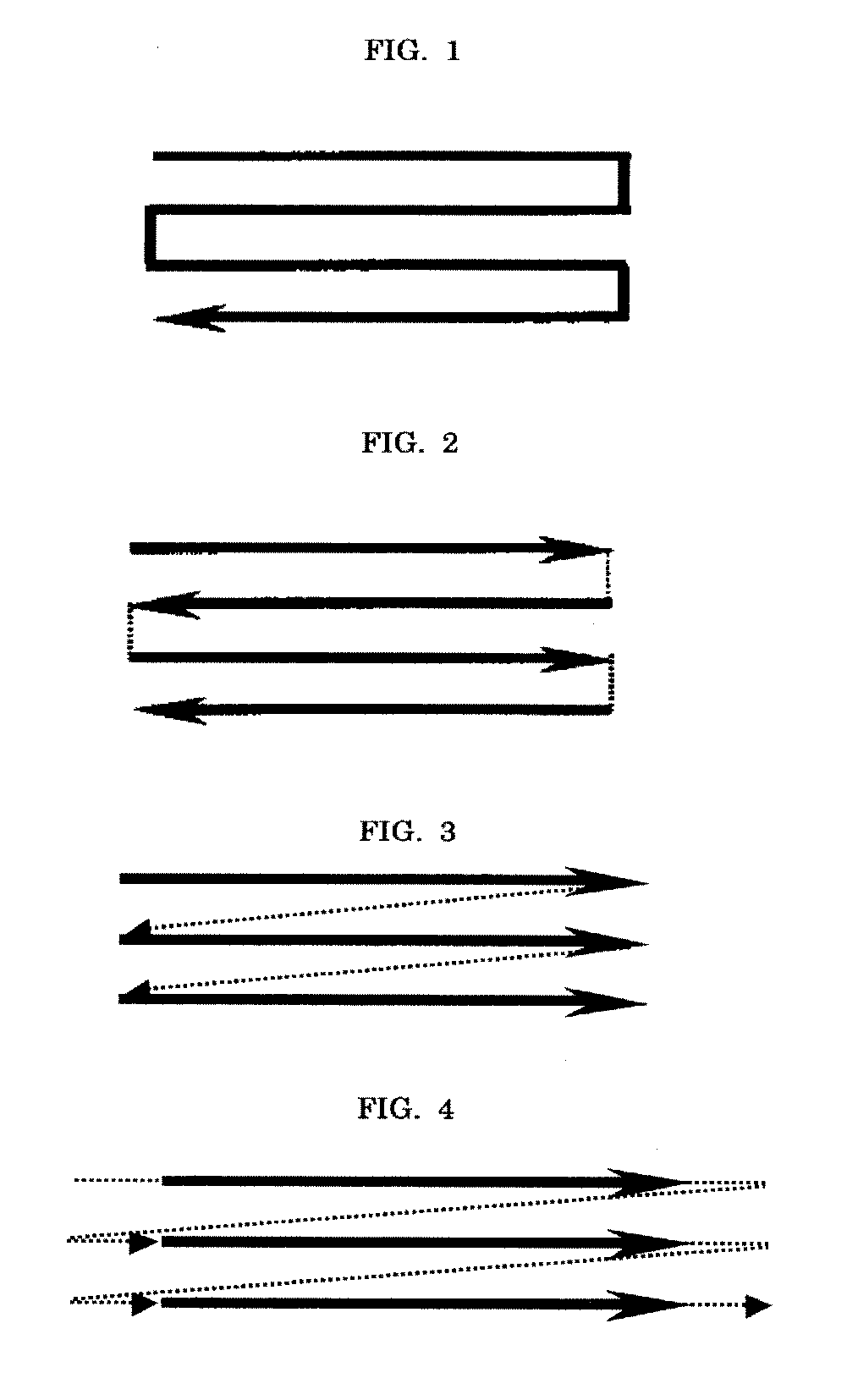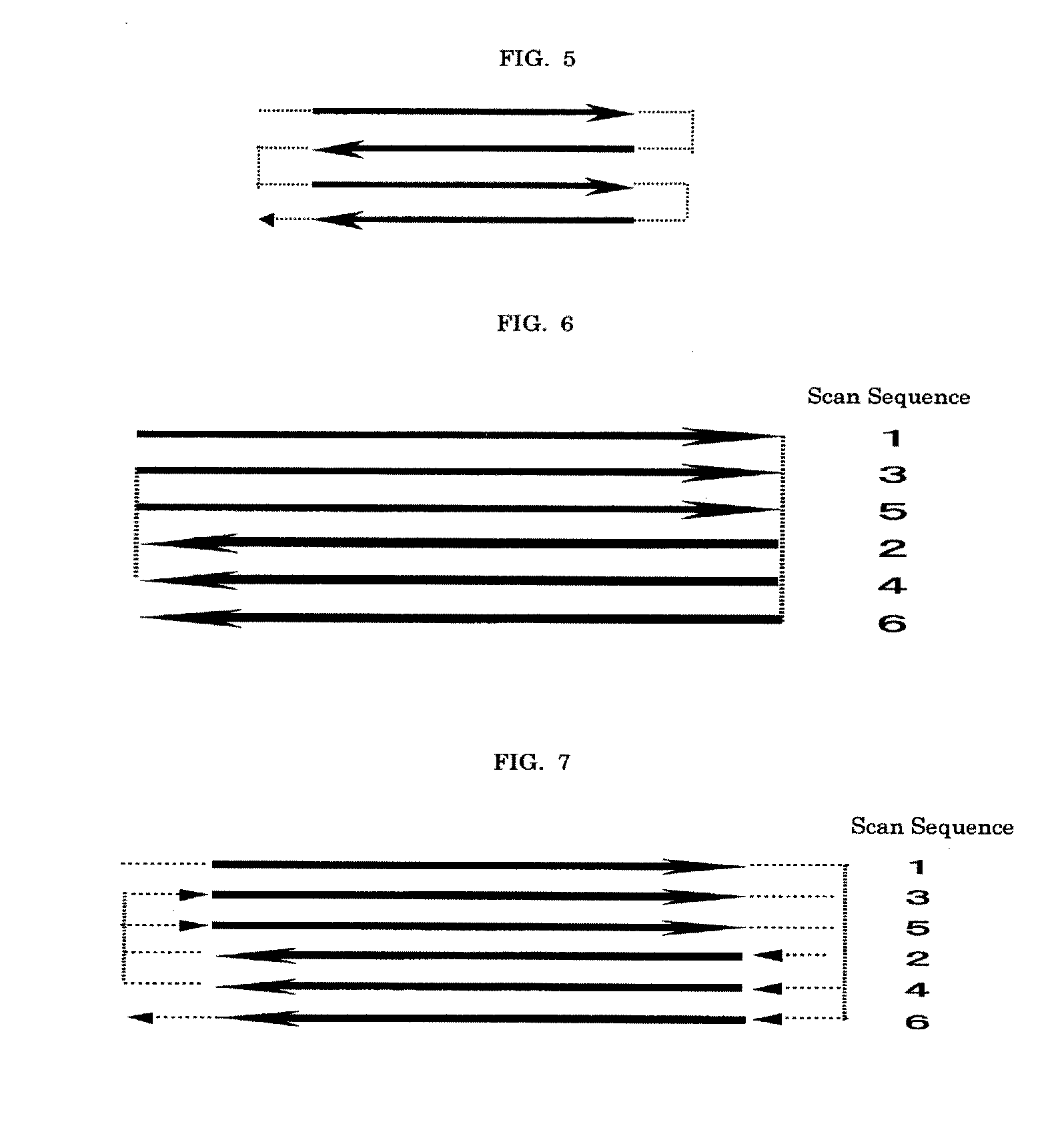Image processing method and image processing apparatus
a technology of image processing and image, applied in the direction of electrical equipment, duplicate/marking methods, printing, etc., can solve the problems of reducing the color density of filling areas, reducing the durability of cycle and erasability, and reducing image erasing time. , to achieve the effect of increasing cycle durability and erasability and reducing image erasing tim
- Summary
- Abstract
- Description
- Claims
- Application Information
AI Technical Summary
Benefits of technology
Problems solved by technology
Method used
Image
Examples
preparation example 1
[0326]A thermoreversible recording medium that offers temperature-dependent reversible changes in color tone (between clear state and color-developed state) was prepared as follow.
—Support—
[0327]A milky polyester film (Tetron Film U2L98W by Teijin Dupont Films Japan Ltd.) of 125 μm thickness was used as a support.
—Under Layer—
[0328]A coating solution for under layer was prepared by mixing together 30 parts by mass of styrene-butadiene copolymer (PA-9159 by Nippon A&L Inc.), 12 parts by mass of polyvinyl alcohol resin (Poval PVA103 by Kuraray Co., Ltd.), 20 parts by mass of hollow particles (Microsphere R-300 by Matsumoto Yushi-Seiyaku Co., Ltd.) and 40 parts by mass of water, followed by 1 hour stirring until homogenous.
[0329]Next, the support was coated with the obtained coating solution for under layer by means of a wire bar, heated at 80° C. for 2 minutes and dried to form an under layer of 20 μm thickness.
—Reversible Thermosensitive Recording Layer (Recording Layer)—
[0330]Five p...
preparation example 2
[0339]A thermoreversible recording medium that offers temperature-dependent reversible changes in transparency (between clear state and clouded state) was prepared as follow.
—Support—
[0340]A transparent PET film (Lumilar 175-T12 by Toray Industries, Inc.) of 175 μm thickness was used as a support.
—Reversible Thermosensitive Recording Layer (Recording Layer)—
[0341]In a glass bottle, 3 parts by mass of low-molecular-weight organic substance represented by the following Structural Formula (5) and 7 parts by mass of docosyl benenate were added in a resin solution containing 26 parts by mass of vinyl chloride copolymer (M110 by Zeon Corp.) dissolved in 210 parts by mass of methyl ethyl ketone. Ceramic beads of 2 mm diameter were placed in the glass bottle, followed by dispersing treatment for 48 hours by using a paint shaker (by Asada Iron Works, Co., Ltd.). In this way a uniform dispersion solution was obtained.
[0342]Next, 4 parts by mass of isocyanate compound (Colonate 2298-90T by Nip...
preparation example 3
[0345]A thermoreversible recording medium of Preparation Example 3 was prepared as in Preparation Example 1 except that 0.03 parts by mass of photothermal conversion material (Excolor®IR-14 by Nippon Shokubai Co., Ltd.) was added in the recording layer upon fabrication of the thermoreversible recording medium.
PUM
| Property | Measurement | Unit |
|---|---|---|
| time | aaaaa | aaaaa |
| diameter | aaaaa | aaaaa |
| diameter | aaaaa | aaaaa |
Abstract
Description
Claims
Application Information
 Login to View More
Login to View More - R&D
- Intellectual Property
- Life Sciences
- Materials
- Tech Scout
- Unparalleled Data Quality
- Higher Quality Content
- 60% Fewer Hallucinations
Browse by: Latest US Patents, China's latest patents, Technical Efficacy Thesaurus, Application Domain, Technology Topic, Popular Technical Reports.
© 2025 PatSnap. All rights reserved.Legal|Privacy policy|Modern Slavery Act Transparency Statement|Sitemap|About US| Contact US: help@patsnap.com



